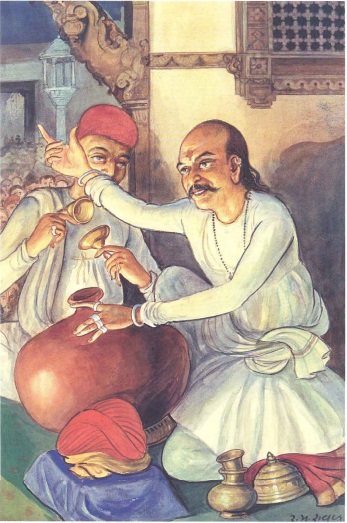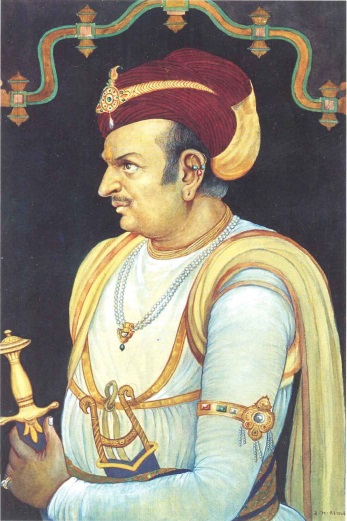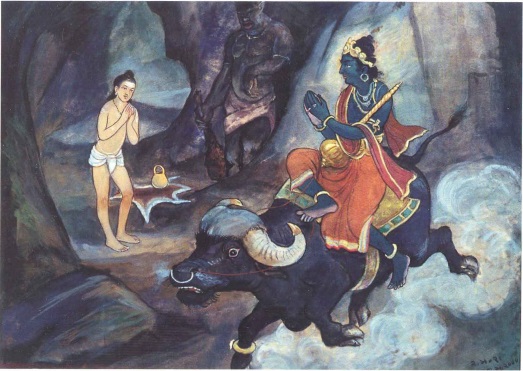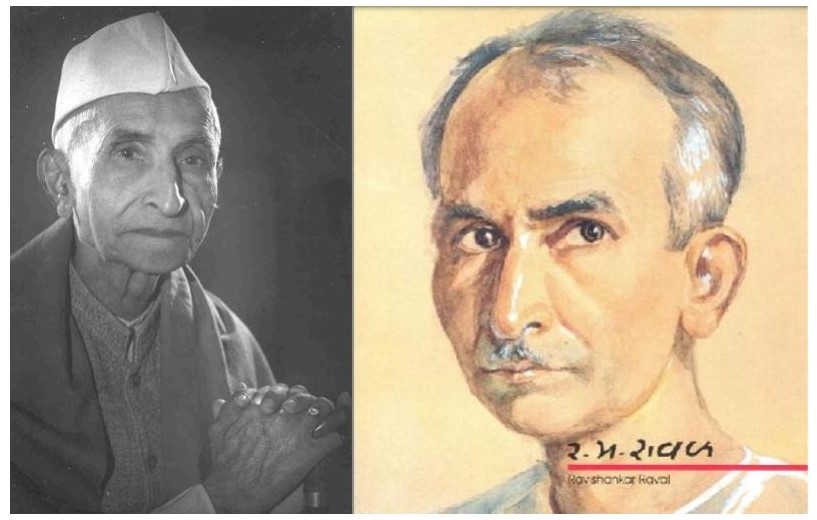1 August, ON THIS DAY
Ravishankar Raval was born in a Brahmin family in Bhavnagar, Gurajat, and is known as a painter, art teacher, art critic, journalist and essayist. He worked for Vismi Sadi until it closed in 1921 and founded the cultural magazine, Kumar. Raval is significant for bridging Gujarat and the Bengal revivalist movement in a golden period of Indian history. He pursued to be an artist and took a short art course in Mumbai and Vadodara’s Kala Bhavan, and he started illustrated biography Atma-Kathanak. Raval father was an officer in the British Communication Service, so he spent his childhood in several towns.
Early Life and Background

Raval was born into a non-artistic family; even he credits the inheritance to his mother, who was a cultured and well-organised person. Ravishankar Raval made a remarkable effort to prove the status of art in Gujarat. Besides being a well-known artist, he created a new cadre of accomplished young artists. Prominent Gujarati literature Kaka Saheb Kalelkar titled him Kalaguru (from Sanskrit, meaning a grand master of art).
During college, his principal asked him to paint the background sets for the college drama festival. Raval’s enthusiasm was noticed by his Parsi professor Sanjana who was pleased with his artistic skills and advised him to join the arts college to study art. Raval joined the Sir J. J. School of Art, Bombay. He was trained under Cecil Burns, the principal of J. J. School.
The Emergence of an Art in Gujarat

“Even though I got new values and dreams, I could not find any traces of imagination and creativity in the art school’s curriculum. […] Not much purpose or thought was explained behind drawing a group of objects as they appear to our eyes, Raval wrote in Gujarat ma Kala na Pagran. Raval started to bring new ideas into his art and art education in Gujarat; he was greatly influenced by Bengali revivalist artists, such as Abanindranath Tagore, Nandalal Bose and Jamini Roy, and imbibed their vocabulary in his exercise as an artist and art instructor. Raval met a prominent journalist Hajji Mohammad Alarakhiya in 1915, and he started working with him as an artist-illustrator for his new cultural magazine Visami Sadi (The Twentieth Century). After the accidental death of Hajji Mohammad, the publication of Visami Sadi ended, and Raval started a new magazine which is still published today and made a great impact on Gujarati arts and was known for its illustrations and experiments in typography.
Mahatma Gandhi was also interested in creating an Art ambience in Gujarat; to do so, Gandhi invited Nandalal Bose when he met him in 1938 at Santiniketan. This allows Raval to work with Nandalal Bose. This historical meeting of both artists greatly impacted Raval’s artistic journey.
Moulding of an Artist

RaviShaker Raval travelled a lot in Indian cities, like Ahmedabad, Vadodara, Mumbai, Pune, Ajanta and Kolkata, and he was inspired by Tagore and Tagorian Institute of Santi Niketan and the Bengal revivalist movement, Raja Ravi Varma paintings. Raval spent a lot of time sketching and studying the Yaksha and Yakshinis in Ajanta caves, which was reflected in his later paintings. Raval focused on his paintings, sketches, portraits, paintings of poets Akho, Premanand, Mirabai, and Narsihn Mehta, and illustrations based on the Literature of K M Munshi’s novels and characters like Munjal and the historical painting of Mahatma Gandhi’s trials also significant in Raval’s works.
Style and Recognition
Influenced by the Indian classical painting, Raval created his style, and Gujarati author Kakasaheb Kalelkar gave him the title of Kalaguru ( the master of art) for his contribution to art in Gujarat and culture. Raval’s art school produced several notable artists from India, such as Kanu Desai.
He was awarded a Gold medal from the Bombay Art Society in 1917 and received Ranjitram Suvarna Chandrak (1930), the highest literary award in Gujarati literature, for his art essays. Raval earned Kalidas Prize in 1925, and in 1965, he was awarded Padma Shri, the fourth-highest civilian award in India.
Conclusion
Raval’s impact on Gujarat art and culture is continuing. Raval’s vision of art has dramatically changed the Gujarati art and culture scenario, bringing new dimensions and perspectives to the artist community. A systemic educational centre for visual art in the region has benefited thousands of people for decades.





